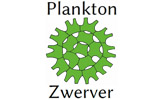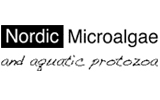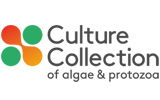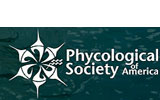Pseudostaurosira D.M.Williams & Round, 1988
Holotype species: Pseudostaurosira brevistriata (Grunow) D.M.Williams & Round
Publication details: D.M.Williams & Round, 1988: 276
Original publication and holotype designation: Williams, D.M. & Round, F.E. (1988 '1987'). Revision of the genus Fragilaria. Diatom Research 2: 267-288, 58 figs.
Description: Frustules symmetrical in side view, forming chains in taxa that possess spines. Taxa with incipient or no spines, presumably attached by mucilage stalks. Valves cruciform, bigibbous, lanceolate, rhombic or elliptic. Sternum of variable width and shape. Transition from valve face to mantle varies from abrupt to more gradual, with formation of a transition zone. Striae composed of one to (rarely) a few rows of wide, round, transapically elliptical, or irregularly polygonal areolae running from valve face to mantle. Internally, areolae open into a single depression running from valve face to mantle, which may become chamber-like. Volae highly branched, usually dichotomously, arising from the inner perimeter of the areolae and at different depths. Virgae rectangular or flared at their proximal and distal ends. Vimines short and wide, the one at the valve face-mantle transition usually being wider, giving the impression of a single apical rib running along the valve face margin. Viminules seldom produced and, when formed, occupying only a part of a stria. Flaps or flat siliceous growths originate from several points around the external perimeter of the areolae, close to their external surface. Concentric discs sometimes present, partially occluding the depression into which the areolae open internally. Solid spines can grow from the enlarged vimen that connects the virgae along the valve-face edge or from the virgae themselves, or they can be absent. Spines of varying shape, but usually spatulate, with or without terminal branching, with a cylindrical base, and often bearing stipulae. Stipules produced near the base of spines and projecting downward. Apical pore fields absent, reduced or more fully developed, of the ocellulimbus type; in many cases they are sunken into the apical portion of the valve. They are composed of round poroids, which are sometimes arranged along external troughs parallel to the apical axis of the valve. Mantle plaques present in many species and situated along the abvalvar edge of the valve mantle. Cingulum composed of a larger valvocopula and few to many ligulate copulae, always open, lacking fimbriae and perforations. Emend. E. Morales (2019 : 268).
Information contributed by: emend E. Morales in Morales et al. (2019).. The most recent alteration to this page was made on 2024-11-01 by E.A. Molinari Novoa.
Taxonomic status: This name is of an entity that is currently accepted taxonomically.
Gender: This genus name is currently treated as feminine.
Most recent taxonomic treatment adopted: Medlin, L.K. & Desdevises, Y. (2016). Phylogeny of 'araphid' diatoms inferred from SSU & LSU rDNA, RBCL & PSBA sequences. Vie et Milieu 66(2): 129-154, 5 figs, 5 tables.
Verification of Data
Users are responsible for verifying the accuracy of information before use, as noted on the website Content page.
Contributors
Some of the descriptions included in AlgaeBase were originally from the unpublished Encyclopedia of Algal Genera,
organised in the 1990s by Dr Bruce Parker on behalf of the Phycological Society of America (PSA)
and intended to be published in CD format.
These AlgaeBase descriptions are now being continually updated, and each current contributor is identified above.
The PSA and AlgaeBase warmly acknowledge the generosity of all past and present contributors and particularly the work of Dr Parker.
Descriptions of chrysophyte genera were subsequently published in J. Kristiansen & H.R. Preisig (eds.). 2001. Encyclopedia of Chrysophyte Genera. Bibliotheca Phycologica 110: 1-260.
Linking to this page: https://www.algaebase.org/search/genus/detail/?genus_id=44204
Citing AlgaeBase
Cite this record as:
E.A. Molinari Novoa in Guiry, M.D. & Guiry, G.M. 01 November 2024. AlgaeBase. World-wide electronic publication, National University of Ireland, Galway. https://www.algaebase.org; searched on 16 April 2025
 Request PDF
Request PDF














